Hi dear,
I'm glad that you enjoyed my previous letter. I'm writing to you from a new location now; I have moved to a larger house that has furniture and, most importantly, windows!
Do you recall the festivals you celebrated when you were a child? Did you understand them back then? I have a vivid memory of one such festival. My dad had drawn a fake mustache on my face using a burnt wine bottle cork, as that was apparently the professional way of making fake mustaches, and convinced me that I looked so different that none of my friends would be able to recognize me. The festival was held at my school, and I still remember walking through the corridors, holding my dad's hand, feeling like a different person. I didn't understand the meaning of the festival, but since all the kids were participating, I assumed it was just another routine thing that kids do. Besides, I had a cool mustache, so who cares!
Thirty years later I find myself at another festival but this time on the other side of the world: Tiruvannamalai, India. The festival is called Mayana Kollai and it's only celebrated in this region. It's early in the morning and people are gathering inside one of the many temples dedicated to the goddess Angalamman. As usual, there's a lot going on, and I'm running around trying to photograph as much as I can. Kids are getting their make-up and costumes ready, people are performing rituals, there are drums everywhere, and the festival hasn't even started yet.
As I'm photographing people inside the temple, whenever I notice someone who speaks good English, I use the opportunity to ask them about the story behind the festival of Mayana Kollai. To my surprise, each person tells me a different story.
Most tales revolve around a curse or a demonic force that threatens the balance of the world. In order to fight this evil, the Goddess Parvathi takes the form of Angalamman and defeats this threat at a graveyard.
Nowadays, the legend is celebrated by carrying an idol of the Goddess from the temple to a cemetery in a big procession that takes place on the streets. Some followers dress up as the different gods or characters of the story to impersonate them. A lady who is helping her young son put on makeup tells me that in some neighboring towns, once the procession reaches the graveyard, those who are dressed as the Goddess Angalamman gather around a random grave, dig it up, and actually chew the bones of the deceased.
"If you're lucky, you'll get to see some animal sacrifices too," she adds. That's not comforting at all! But I start to understand why some of the costumes I'm seeing around me have human skulls hanging around their necks. And probably why some of those skulls look way too realistic to be made out of plastic.
I am still trying to understand how they all believe in different things yet celebrate the same festival when suddenly, a small hand grabs mine. As I turn, I see a young girl with bright eyes and a wide smile, no older than eight, who wants to show me something. At first, I resist, but the girl's determination is infectious, so I follow her through the crowds. She leads me outside the temple to a nearby bus stop. As we get closer, I hear someone screaming in pain. A circle of people has gathered around, and she opens a way in. When we reach the center, I see a young boy being held down by several adults, and I am shocked at what I see. The impact of the scene hits me in my whole body. An older man is stitching lemons directly to his skin. I am paralyzed. The kid's father is next to him, supporting and cheering for him. He notices me and my camera, and without me having to ask anything, he nods in agreement. I feel conflicted about taking photos of this boy, but I lift my camera and start shooting.
As far as I understand, when adults perform these kinds of rituals, they do so to demonstrate their deep commitment to a desire or need. For example, someone might want to be healed from a disease, find a job, or get pregnant. The ritual is a way to negotiate with the gods: "I will offer my suffering in exchange for my wish."
The suffering endured during the ritual may seem completely unrelated to the desired goal, but it's an act of surrender, in the hope that the gods will make a connection between the performer's efforts and their goals. In that sense, they are not so different from prayers; they are a way to channel one's efforts towards a goal, a way to do something when you don't know what else to do.
In the case of this ritual, the boys are not only enduring the pain of having lemons stitched to their skin, but once the procession starts, they will have to jump and shake their bodies to make the lemons detach and fall to the ground. To me, this sounds even more painful than having them stitched on in the first place. I have no clue how this little boy will manage it. As I watch him, I can't help but think of my own childhood. The memory of the fake mustache seems so distant now, so small compared to what I'm witnessing. Until now, I assumed that most kids experienced similar things growing up.
As the sun starts to set, the procession kicks off and I follow along, struggling to make sense of it all. I wonder if the kids around me in their cute outfits will witness animal decapitations or grave looting later in the day. When did this festival start, and why is it celebrated like this? The more questions I ask, the more confused I become... and that might just be the issue! I'm the only one attempting to understand what's happening; the people around me just believe, and that's enough for them. Attempting to squeeze this festival into the confines of my cultural background is driving me away from the experience. I'm the one drawing a line between myself and them, and I don't want to be that sort of Westerner.
I would like to understand further to explain to you, but if I keep going this way, I'll fail to capture something even more significant. The beauty of this festival and the Tamil culture lies precisely in its resistance to be labeled and categorized. Some things can't be understood through a westerner's lens.
The girl who asked me to follow her a few hours ago, out of everything that was happening, picked that boy. She showed me something I wasn't seeing. She found a way to pierce through the crowd and through my own cultural norms to put me face to face with something new. She invited me to see things through the eyes of a child. Just like when I wore a fake mustache, at this festival, I'm not being asked to fully understand what's happening. This is not a crossword puzzle, it's a coloring book, and coloring outside the lines can still create a stunning picture.
The first half of life is learning to be an adult.
The second half is learning to be a child.
Pablo Picasso
Check out David Esteban's Lens & Letters Substack for more stories like this one.
Photography & Writing: David Estaban
Editing: Mei Seva & Jorge Delgado-Ureña

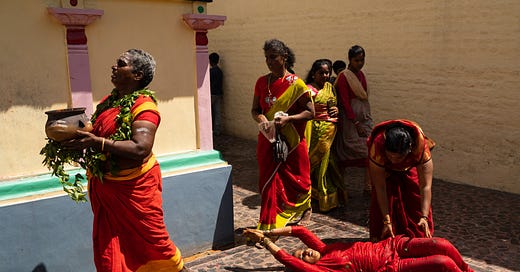





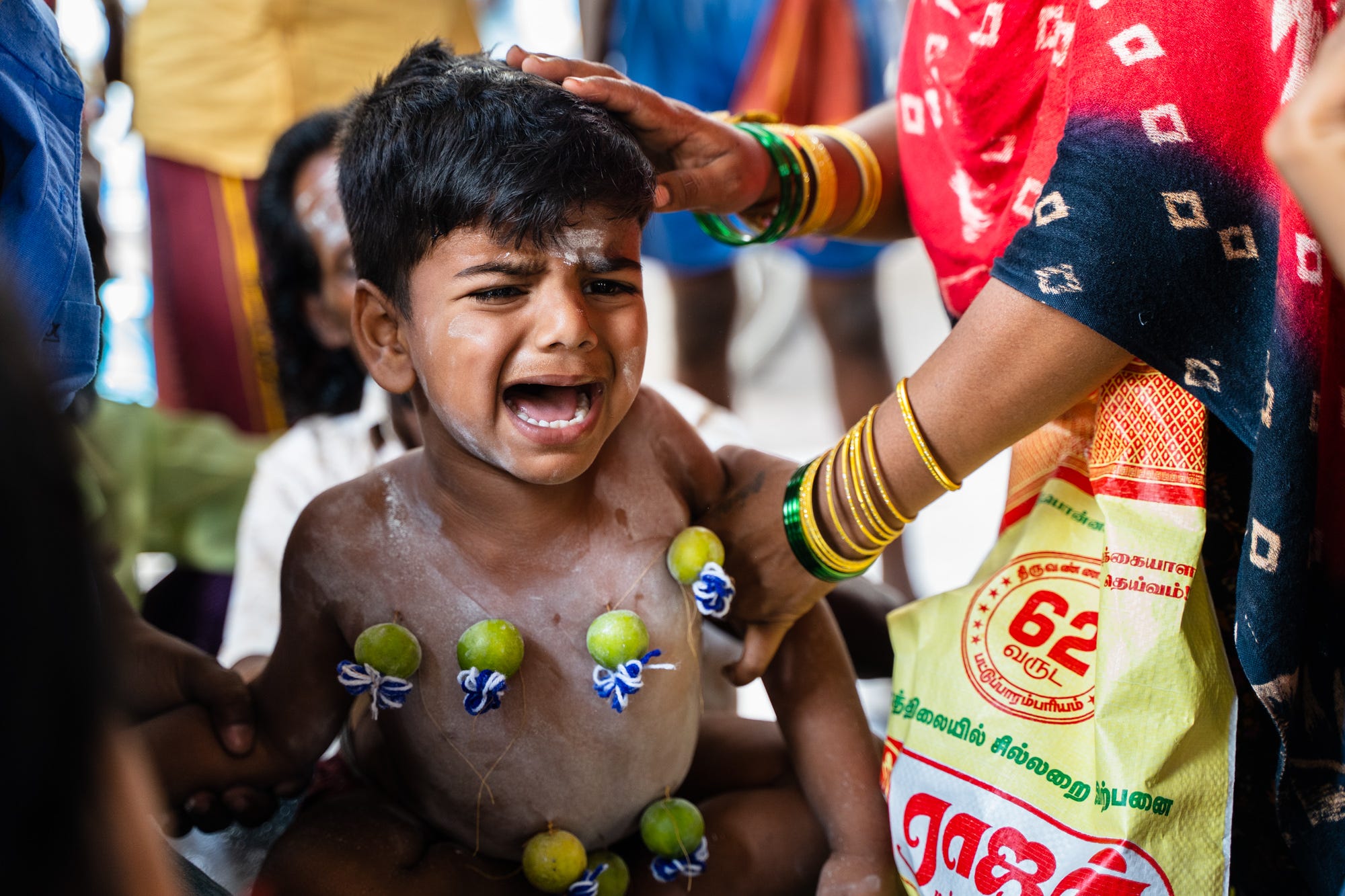
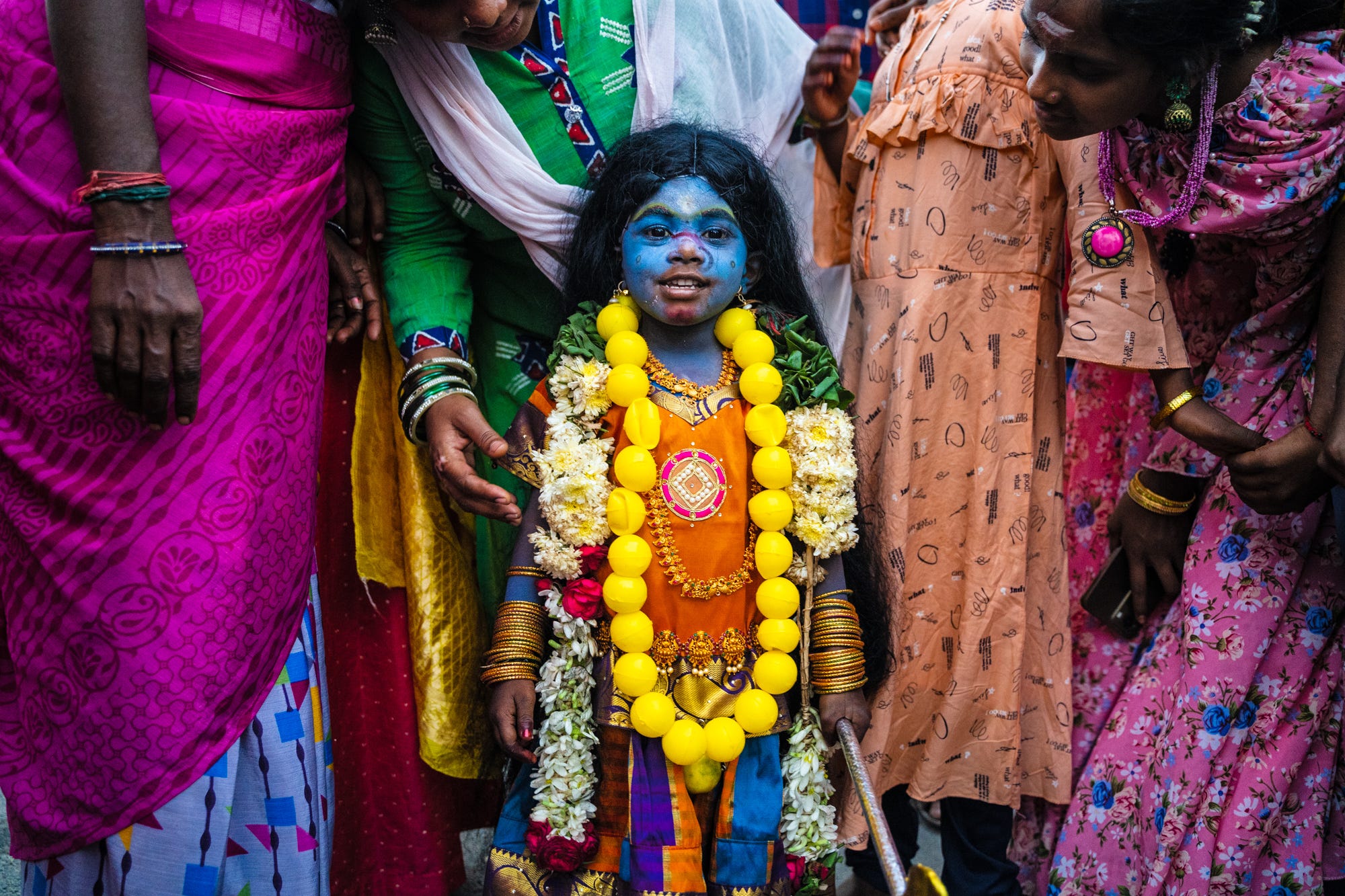

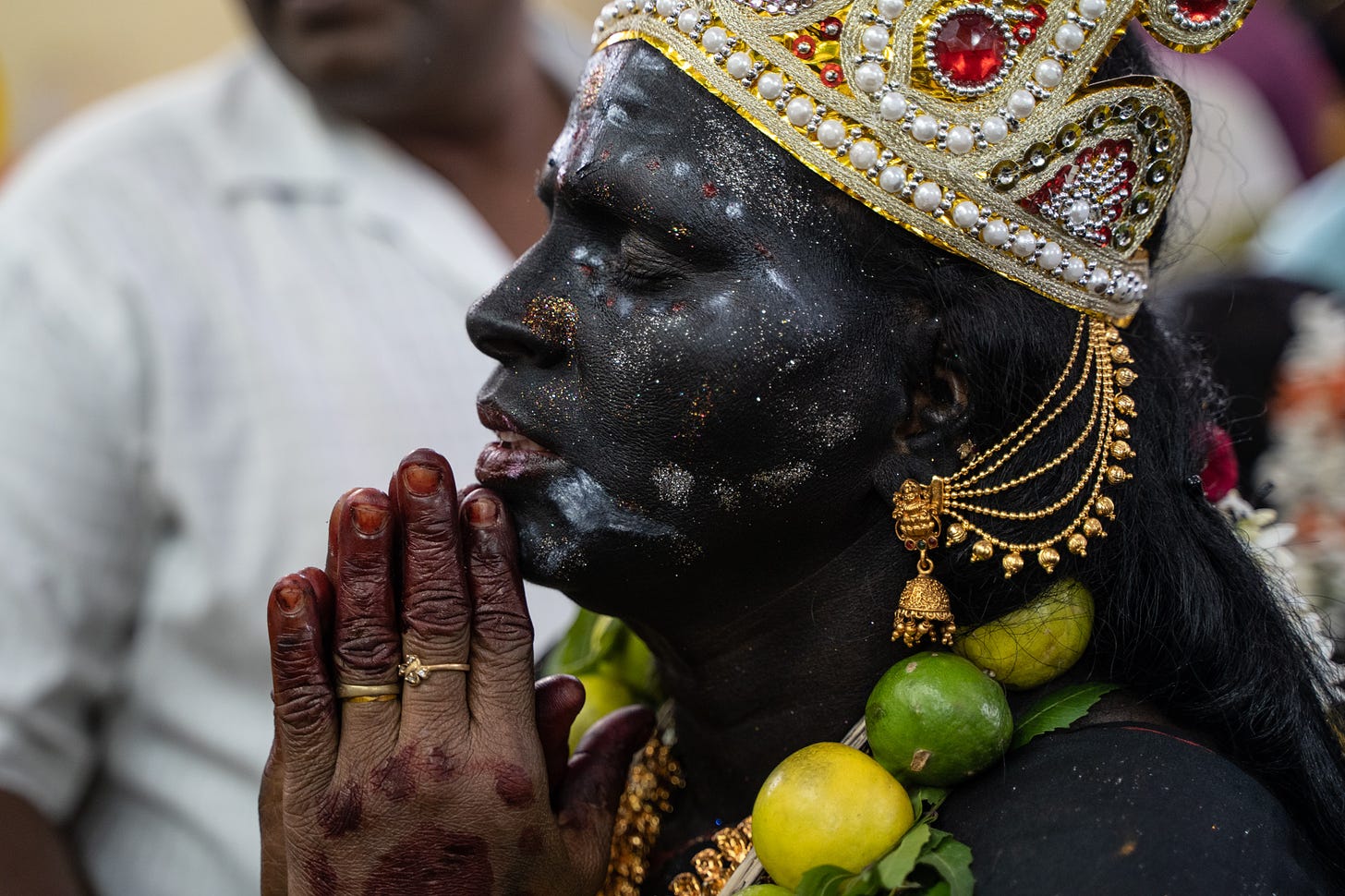
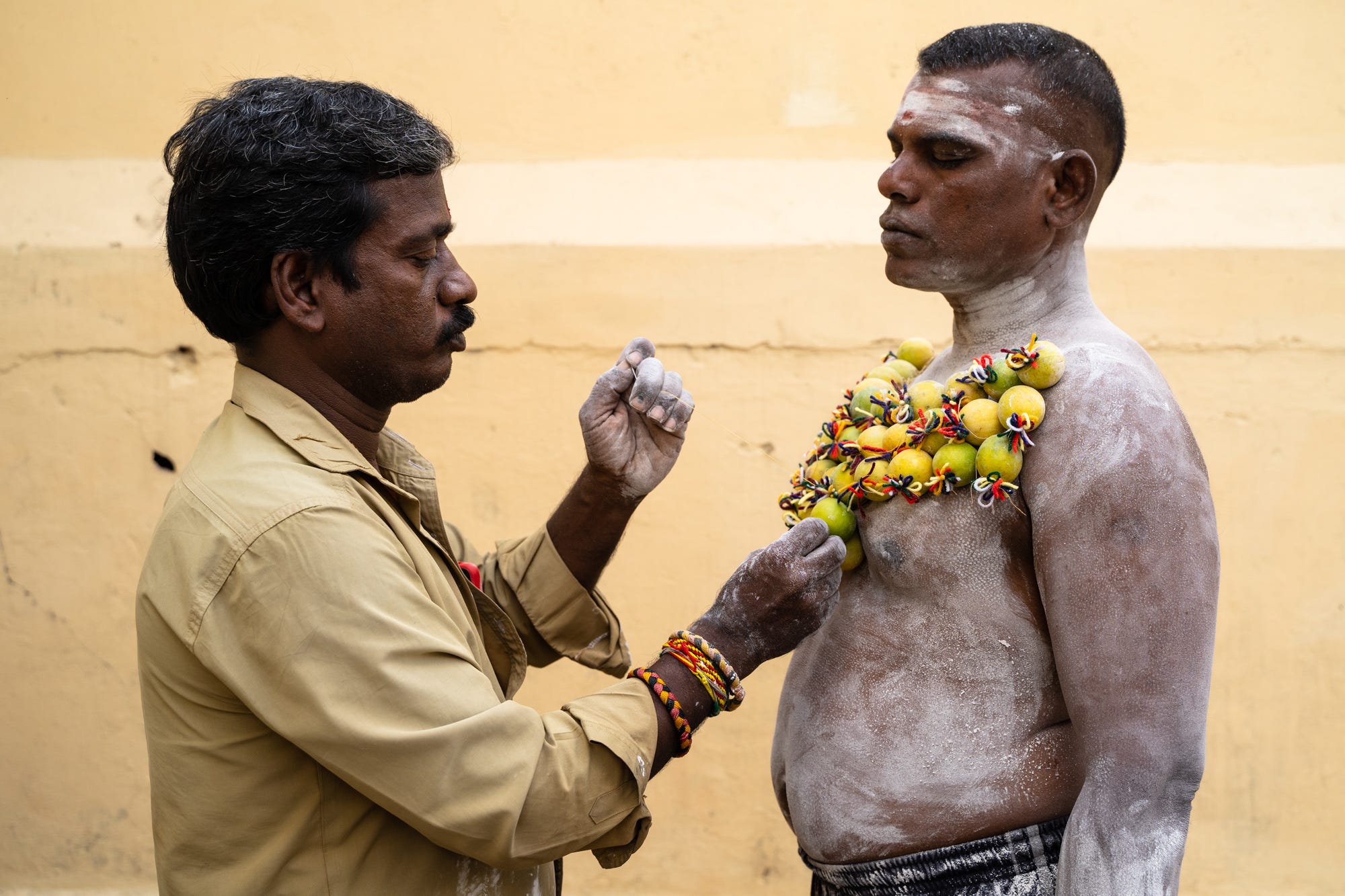
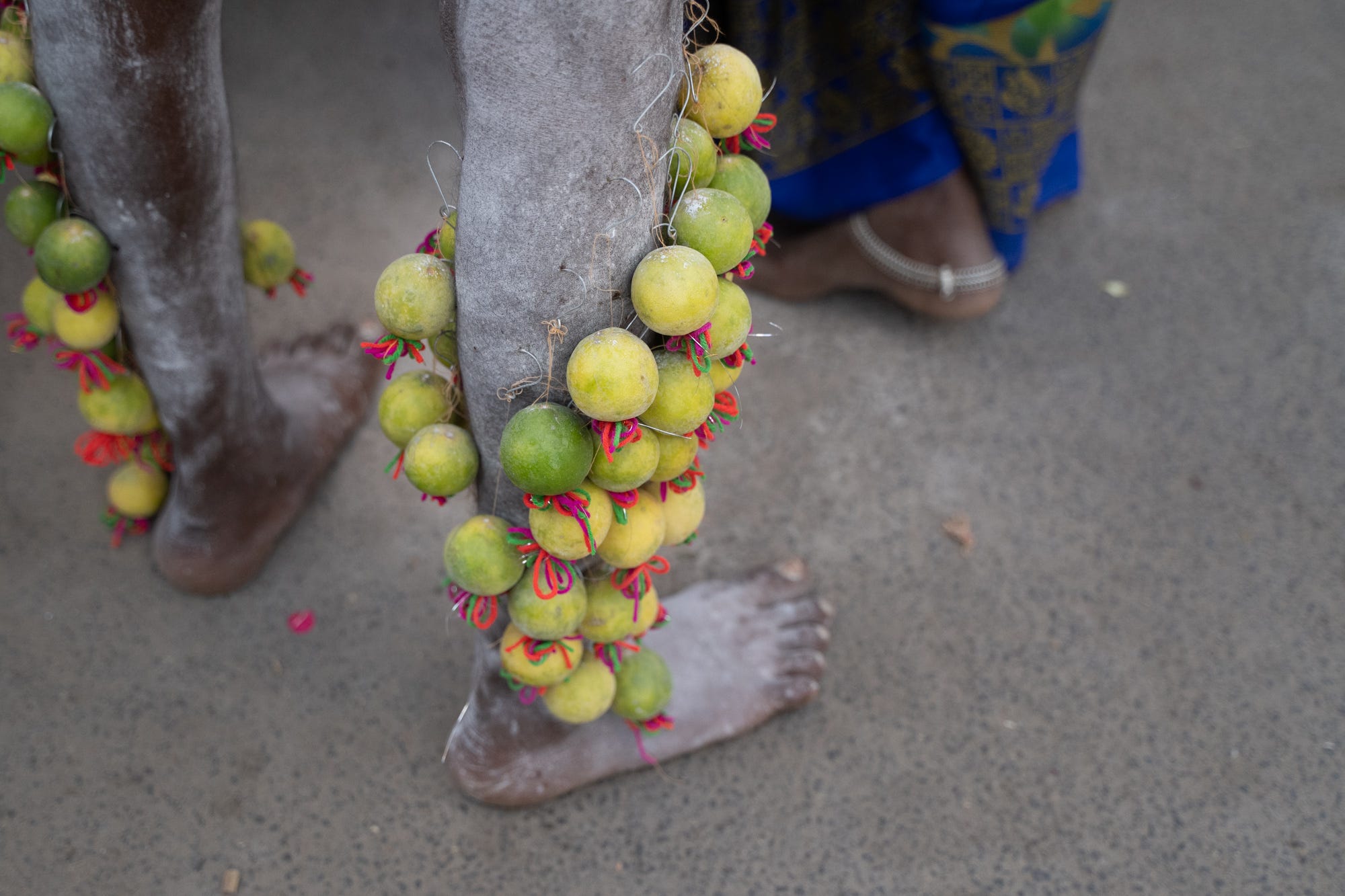

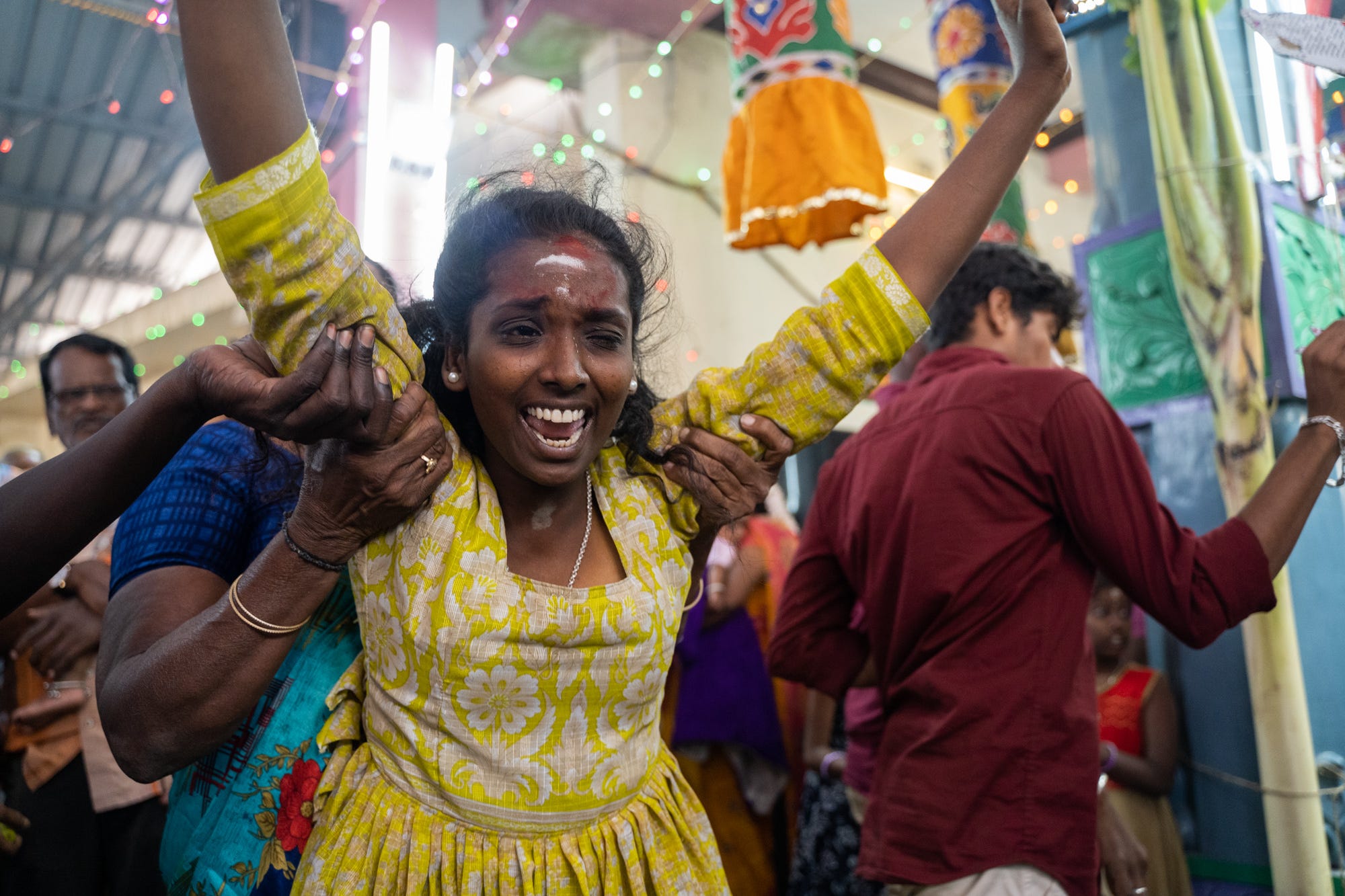
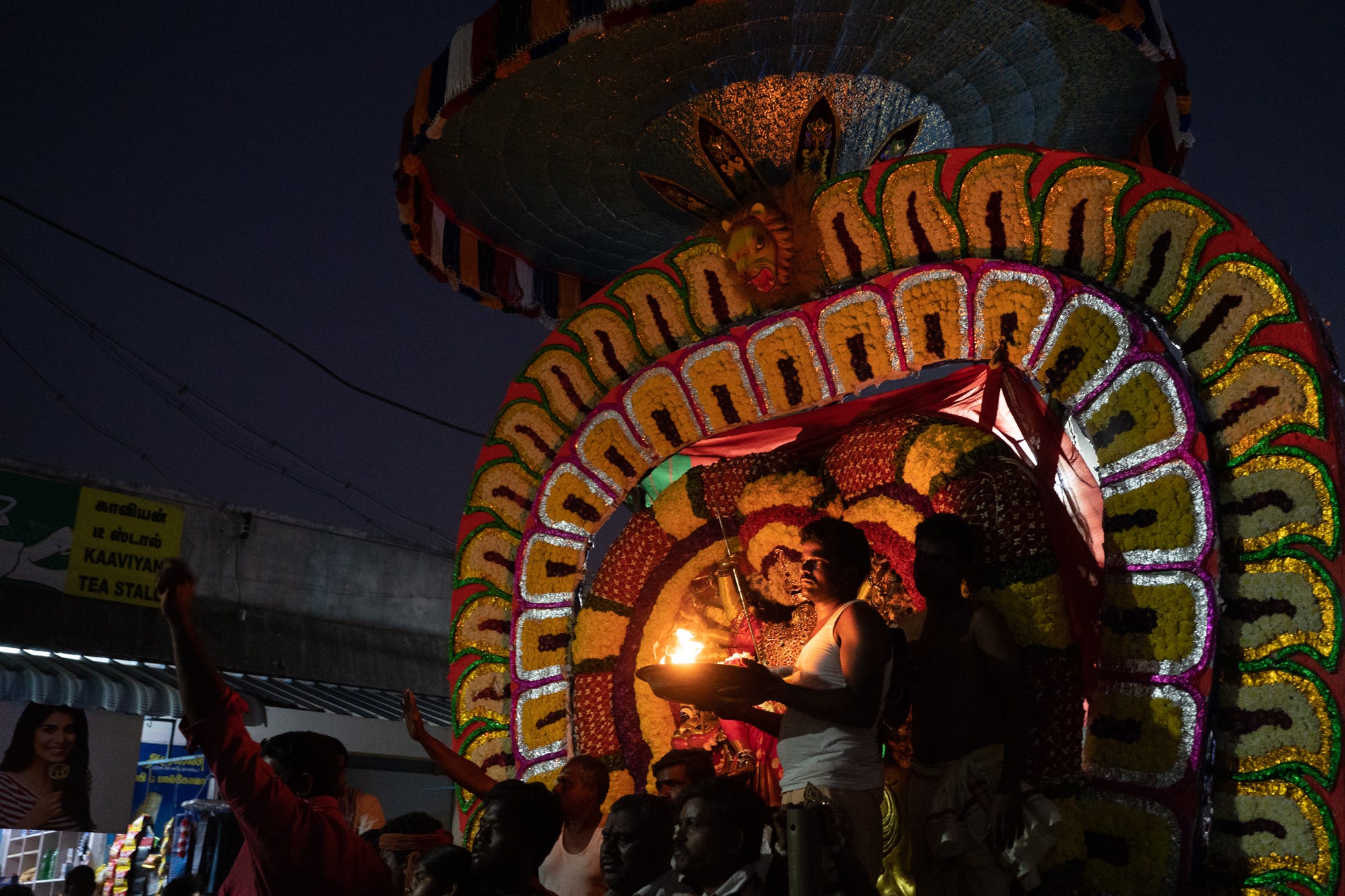

Wow 👏🏻
Raghubir would have loved these.